Abstract
1. In resting subjects low-intensity magnetic stimulation of the brain evoked an inhibition of the soleus H reflex at short latency (conditioning-test interval, -2 to +1 ms) followed approximately 10 ms later by a period of facilitation. During voluntary dynamic or tonic plantar flexion the same stimulus evoked a facilitation with a shorter latency than the inhibition (conditioning-test interval, -5 to -1 ms). 2. At the onset of ramp-and-hold plantar flexion the short-latency facilitation was seen at lower intensities of stimulation than the long-latency facilitation in six of seven subjects. At rest and/or during tonic plantar flexion the opposite was observed in four of the subjects, whereas the two facilitations had approximately the same threshold in the remaining subjects. 3. The short-latency facilitation decreased approximately 100 ms after the onset of ramp-and-hold plantar flexion in all of eight subjects. The long-latency facilitation, in contrast, either had the same size throughout the ramp phase or even increased around the end of the ramp phase. 4. The short-latency facilitation of the reflex was significantly larger at the onset of a fast ramp-and-hold plantar flexion (10 N m (150 ms)-1) than at the onset of a slow contraction (10 N m (600 ms)-1), whereas the opposite was the case for the long-latency facilitation. 5. As the short- and long-latency facilitations had different thresholds and were differently regulated during voluntary movement, it is suggested that they are caused by activation of different descending pathways by the magnetic stimulus.
Full text
PDF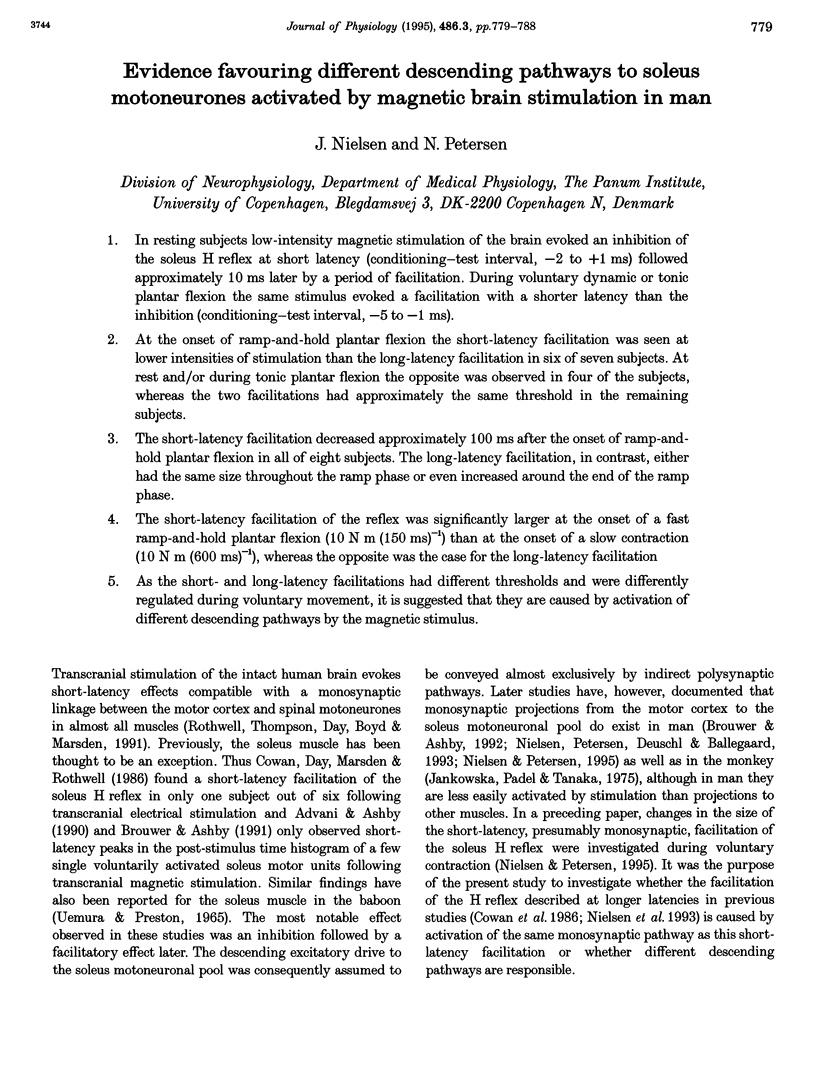
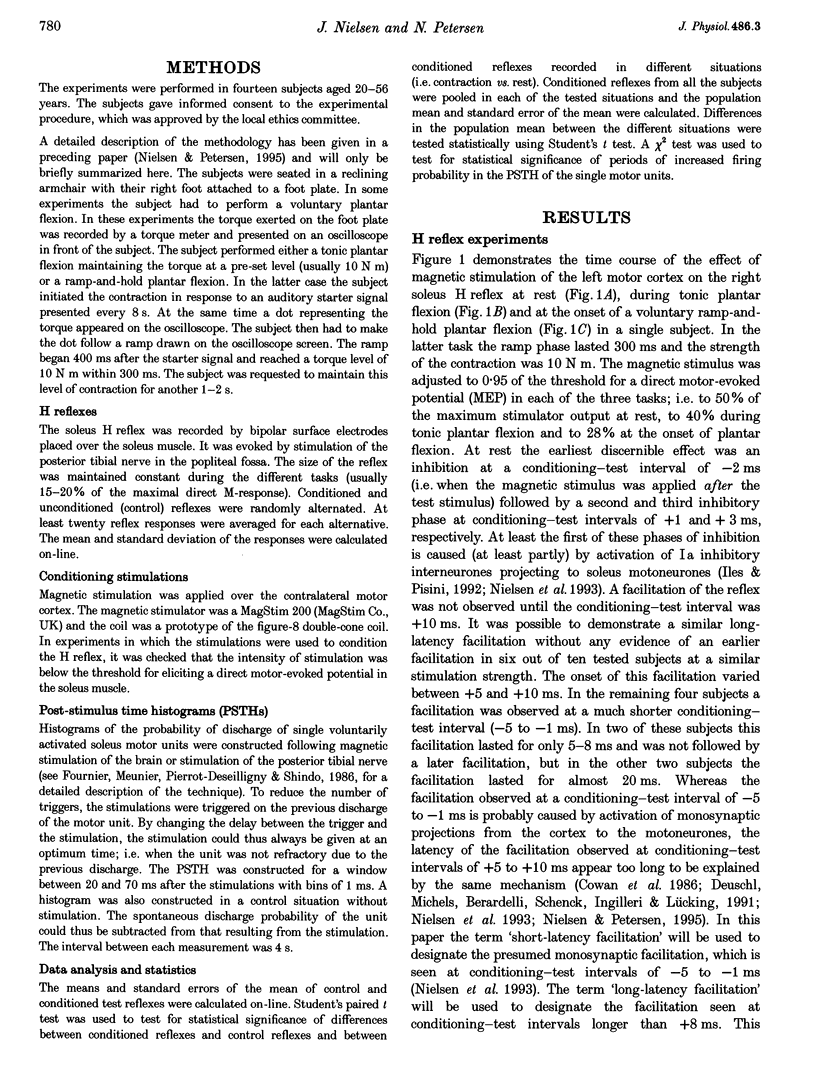
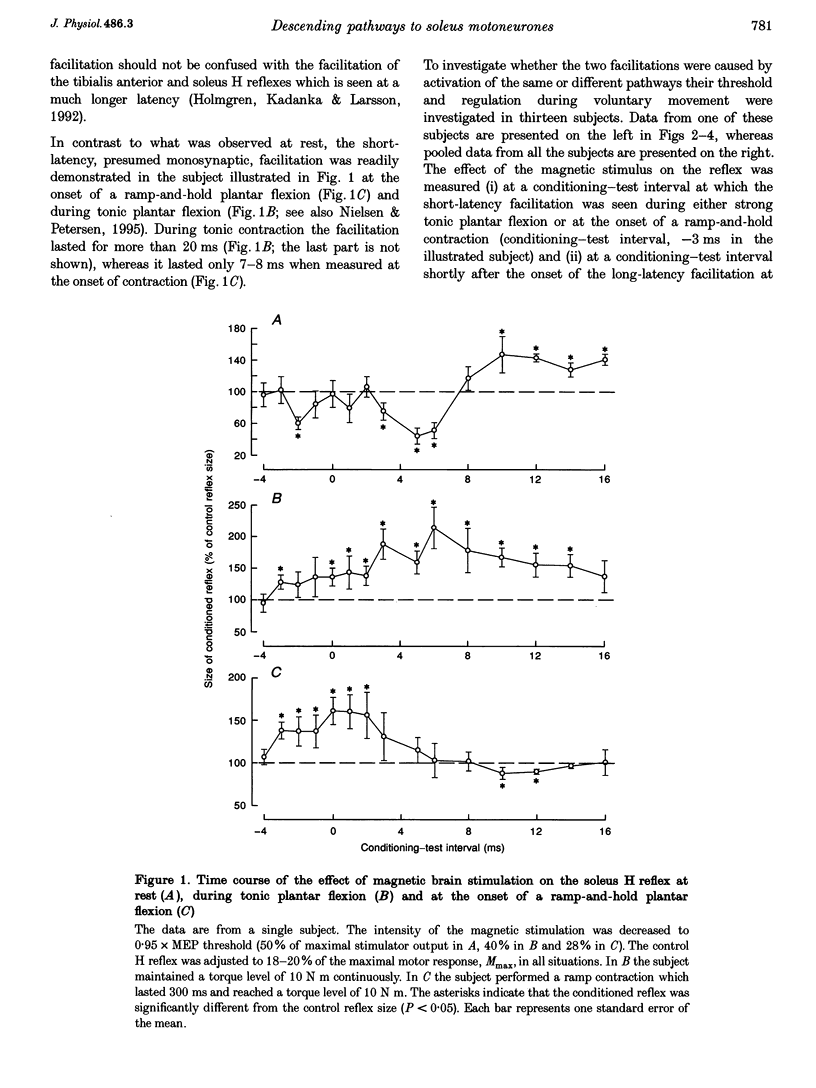
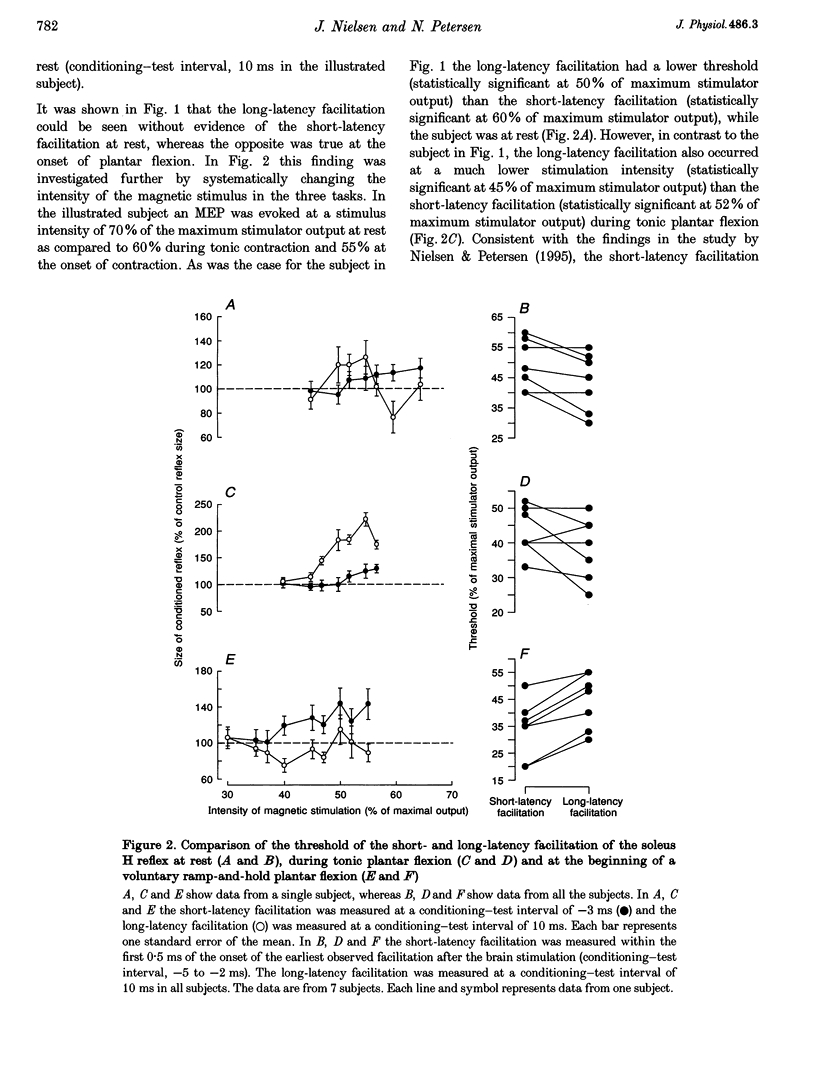
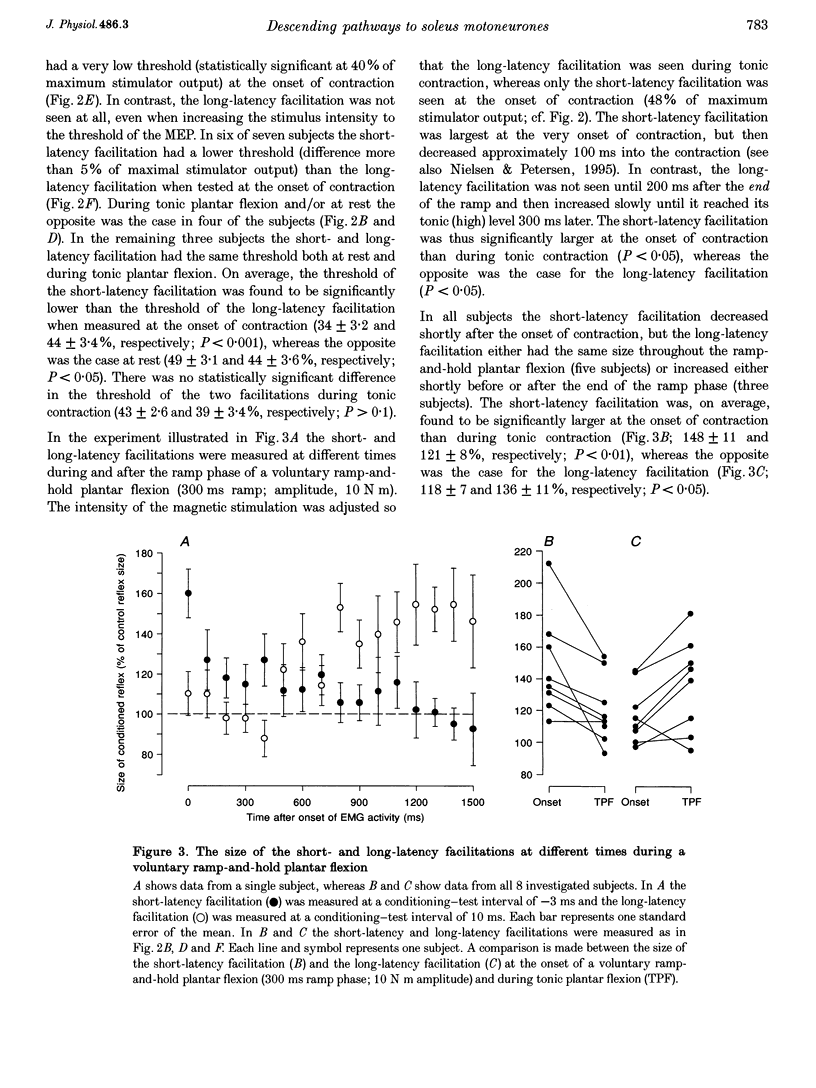
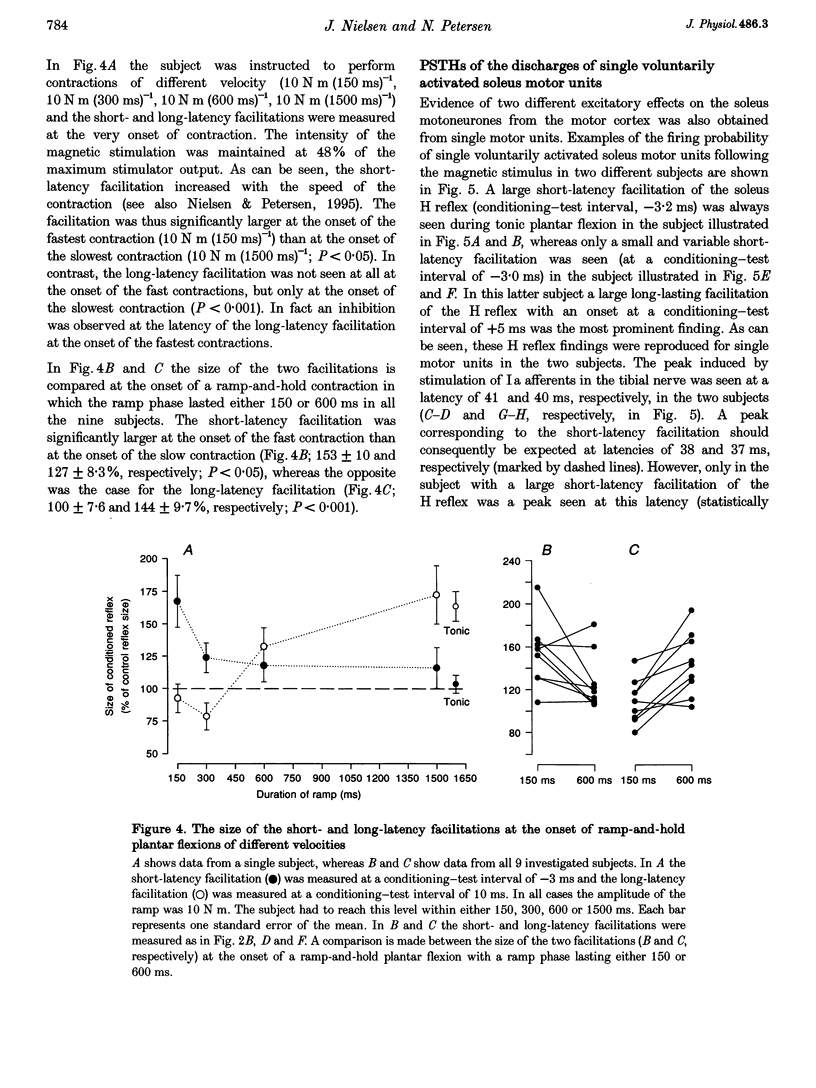
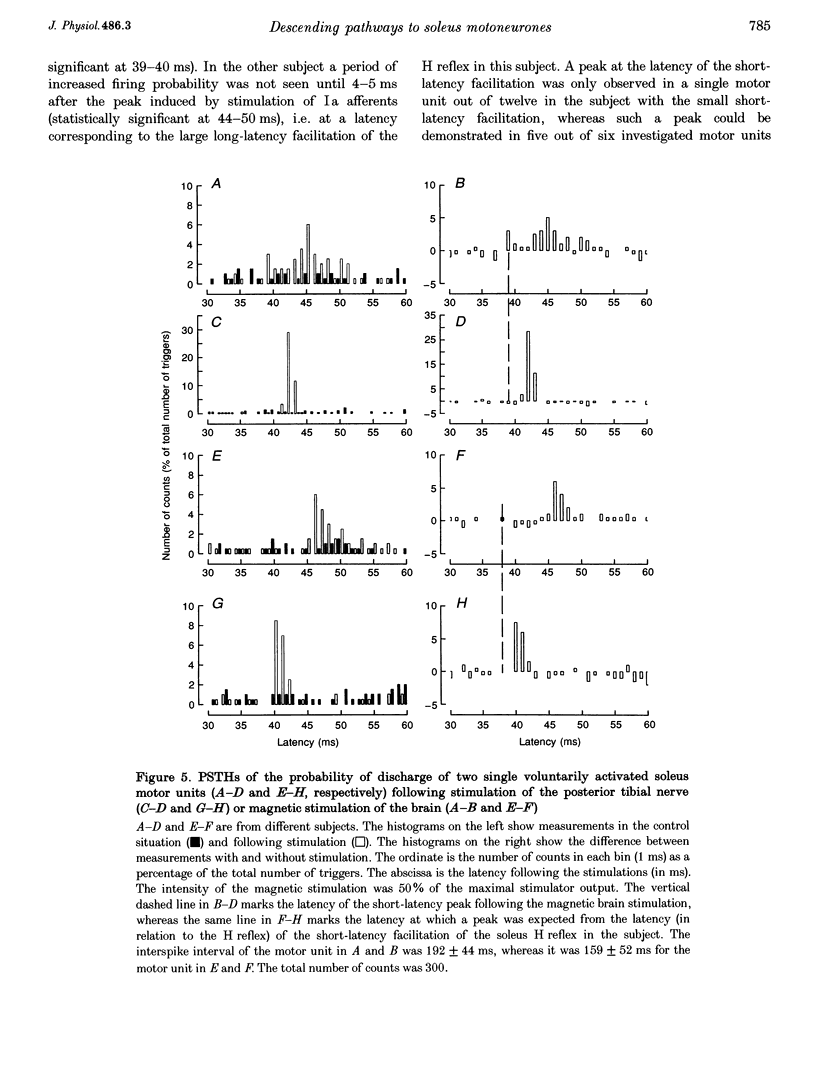
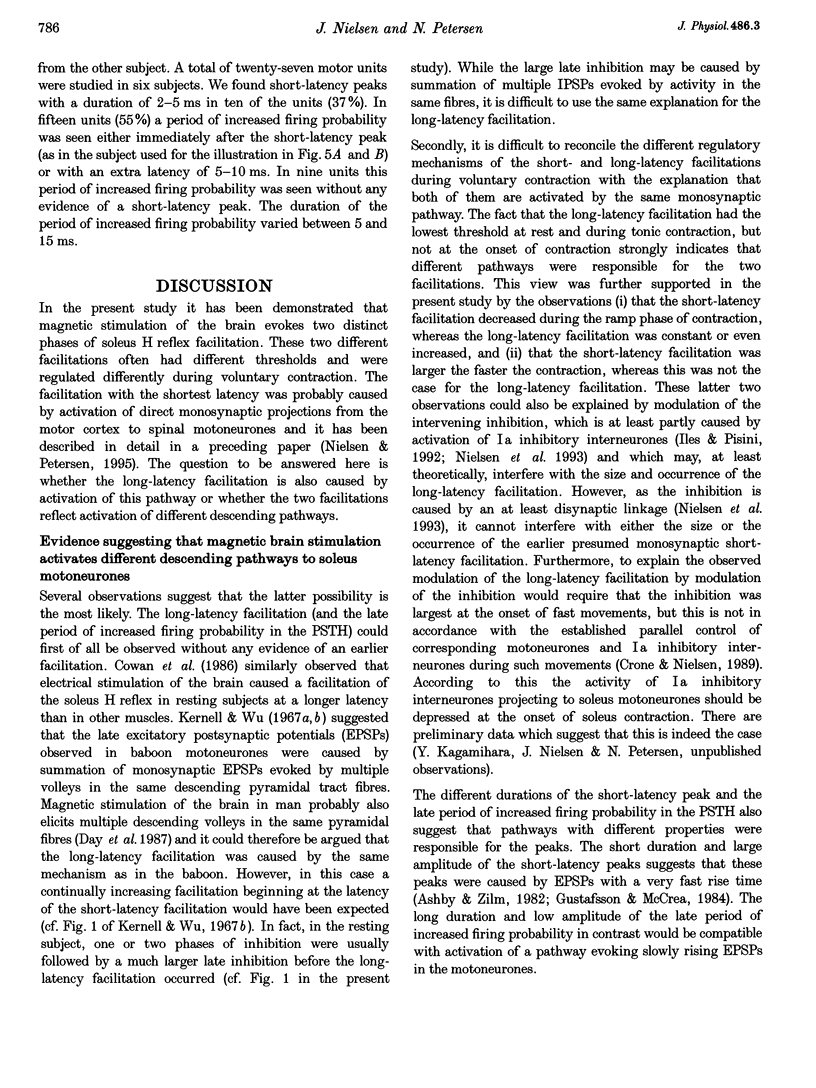
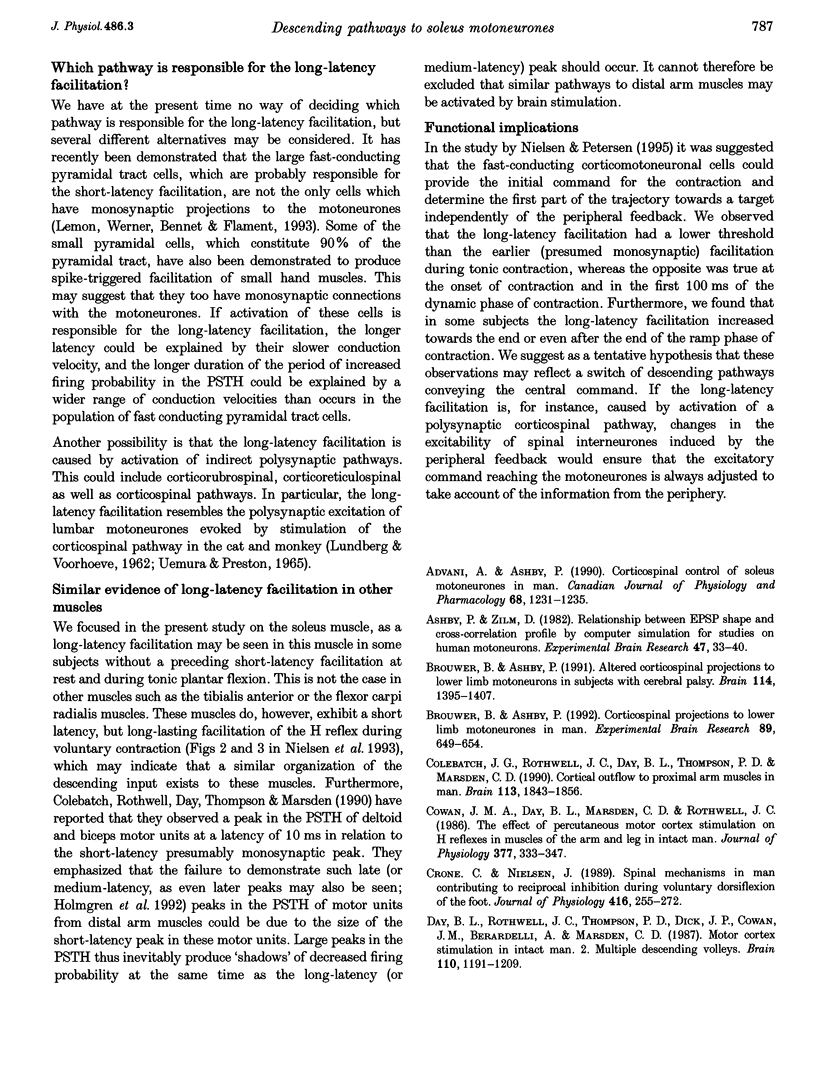
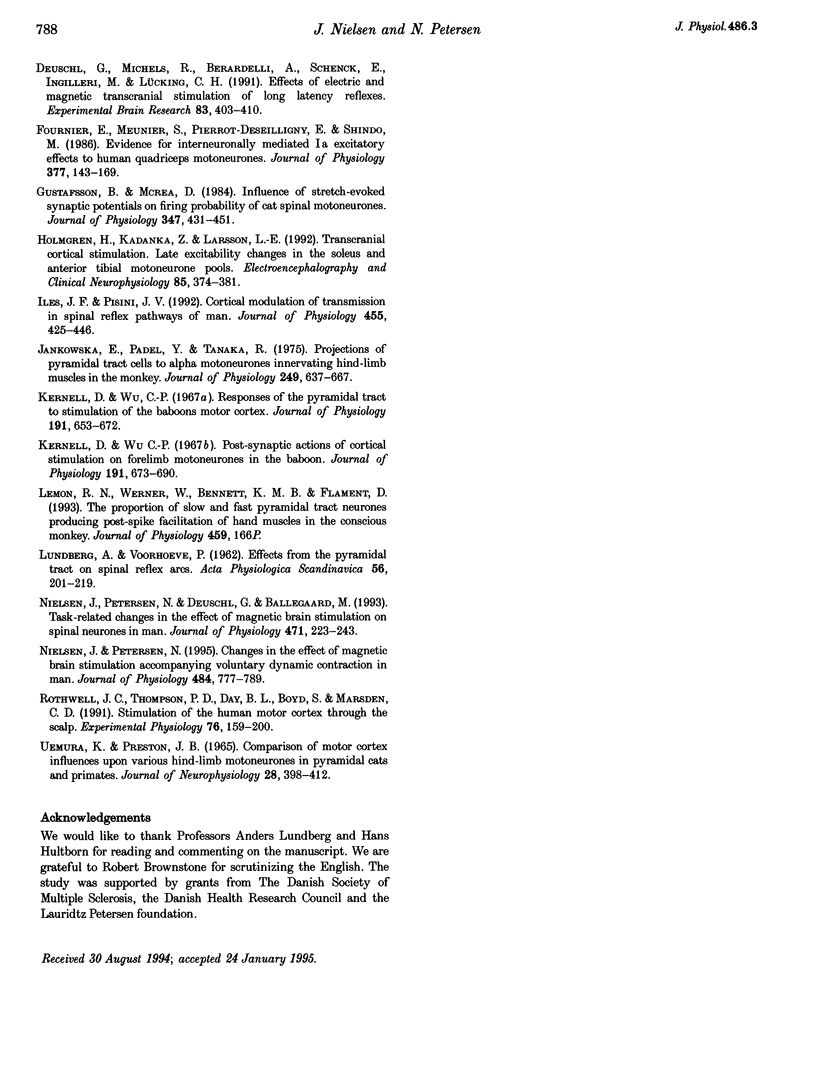
Selected References
These references are in PubMed. This may not be the complete list of references from this article.
- Advani A., Ashby P. Corticospinal control of soleus motoneurons in man. Can J Physiol Pharmacol. 1990 Sep;68(9):1231–1235. doi: 10.1139/y90-185. [DOI] [PubMed] [Google Scholar]
- Ashby P., Zilm D. Relationship between EPSP shape and cross-correlation profile explored by computer simulation for studies on human motoneurons. Exp Brain Res. 1982;47(1):33–40. doi: 10.1007/BF00235883. [DOI] [PubMed] [Google Scholar]
- Brouwer B., Ashby P. Altered corticospinal projections to lower limb motoneurons in subjects with cerebral palsy. Brain. 1991 Jun;114(Pt 3):1395–1407. doi: 10.1093/brain/114.3.1395. [DOI] [PubMed] [Google Scholar]
- Brouwer B., Ashby P. Corticospinal projections to lower limb motoneurons in man. Exp Brain Res. 1992;89(3):649–654. doi: 10.1007/BF00229889. [DOI] [PubMed] [Google Scholar]
- Colebatch J. G., Rothwell J. C., Day B. L., Thompson P. D., Marsden C. D. Cortical outflow to proximal arm muscles in man. Brain. 1990 Dec;113(Pt 6):1843–1856. doi: 10.1093/brain/113.6.1843. [DOI] [PubMed] [Google Scholar]
- Cowan J. M., Day B. L., Marsden C., Rothwell J. C. The effect of percutaneous motor cortex stimulation on H reflexes in muscles of the arm and leg in intact man. J Physiol. 1986 Aug;377:333–347. doi: 10.1113/jphysiol.1986.sp016190. [DOI] [PMC free article] [PubMed] [Google Scholar]
- Crone C., Nielsen J. Spinal mechanisms in man contributing to reciprocal inhibition during voluntary dorsiflexion of the foot. J Physiol. 1989 Sep;416:255–272. doi: 10.1113/jphysiol.1989.sp017759. [DOI] [PMC free article] [PubMed] [Google Scholar]
- Day B. L., Rothwell J. C., Thompson P. D., Dick J. P., Cowan J. M., Berardelli A., Marsden C. D. Motor cortex stimulation in intact man. 2. Multiple descending volleys. Brain. 1987 Oct;110(Pt 5):1191–1209. doi: 10.1093/brain/110.5.1191. [DOI] [PubMed] [Google Scholar]
- Deuschl G., Michels R., Berardelli A., Schenck E., Inghilleri M., Lücking C. H. Effects of electric and magnetic transcranial stimulation on long latency reflexes. Exp Brain Res. 1991;83(2):403–410. doi: 10.1007/BF00231165. [DOI] [PubMed] [Google Scholar]
- Fournier E., Meunier S., Pierrot-Deseilligny E., Shindo M. Evidence for interneuronally mediated Ia excitatory effects to human quadriceps motoneurones. J Physiol. 1986 Aug;377:143–169. doi: 10.1113/jphysiol.1986.sp016179. [DOI] [PMC free article] [PubMed] [Google Scholar]
- Gustafsson B., McCrea D. Influence of stretch-evoked synaptic potentials on firing probability of cat spinal motoneurones. J Physiol. 1984 Feb;347:431–451. doi: 10.1113/jphysiol.1984.sp015074. [DOI] [PMC free article] [PubMed] [Google Scholar]
- Holmgren H., Kadanka Z., Larsson L. E. Transcranial cortical stimulation. Late excitability changes in the soleus and anterior tibial motoneurone pools. Electroencephalogr Clin Neurophysiol. 1992 Dec;85(6):374–381. doi: 10.1016/0168-5597(92)90050-l. [DOI] [PubMed] [Google Scholar]
- Iles J. F., Pisini J. V. Cortical modulation of transmission in spinal reflex pathways of man. J Physiol. 1992 Sep;455:425–446. doi: 10.1113/jphysiol.1992.sp019309. [DOI] [PMC free article] [PubMed] [Google Scholar]
- Jankowska E., Padel Y., Tanaka R. Projections of pyramidal tract cells to alpha-motoneurones innervating hind-limb muscles in the monkey. J Physiol. 1975 Aug;249(3):637–667. doi: 10.1113/jphysiol.1975.sp011035. [DOI] [PMC free article] [PubMed] [Google Scholar]
- Kernell D., Chien-Ping W. U. Responses of the pyramidal tract to stimulation of the baboon's motor cortex. J Physiol. 1967 Aug;191(3):653–672. doi: 10.1113/jphysiol.1967.sp008273. [DOI] [PMC free article] [PubMed] [Google Scholar]
- Kernell D., Chien-Ping W. Post-synaptic effects of cortical stimulation on forelimb motoneurones in the baboon. J Physiol. 1967 Aug;191(3):673–690. doi: 10.1113/jphysiol.1967.sp008274. [DOI] [PMC free article] [PubMed] [Google Scholar]
- LUNDBERG A., VOORHOEVE P. Effects from the pyramidal tract on spinal reflex arcs. Acta Physiol Scand. 1962 Nov-Dec;56:201–219. doi: 10.1111/j.1748-1716.1962.tb02498.x. [DOI] [PubMed] [Google Scholar]
- Nielsen J., Petersen N. Changes in the effect of magnetic brain stimulation accompanying voluntary dynamic contraction in man. J Physiol. 1995 May 1;484(Pt 3):777–789. doi: 10.1113/jphysiol.1995.sp020703. [DOI] [PMC free article] [PubMed] [Google Scholar]
- Nielsen J., Petersen N., Deuschl G., Ballegaard M. Task-related changes in the effect of magnetic brain stimulation on spinal neurones in man. J Physiol. 1993 Nov;471:223–243. doi: 10.1113/jphysiol.1993.sp019899. [DOI] [PMC free article] [PubMed] [Google Scholar]
- Rothwell J. C., Thompson P. D., Day B. L., Boyd S., Marsden C. D. Stimulation of the human motor cortex through the scalp. Exp Physiol. 1991 Mar;76(2):159–200. doi: 10.1113/expphysiol.1991.sp003485. [DOI] [PubMed] [Google Scholar]
- UEMURA K., PRESTON J. B. COMPARISON OF MOTOR CORTEX INFLUENCES UPON VARIOUS HIND-LIMB MOTONEURONS IN PYRAMIDAL CATS AND PRIMATES. J Neurophysiol. 1965 Mar;28:398–412. doi: 10.1152/jn.1965.28.2.398. [DOI] [PubMed] [Google Scholar]


